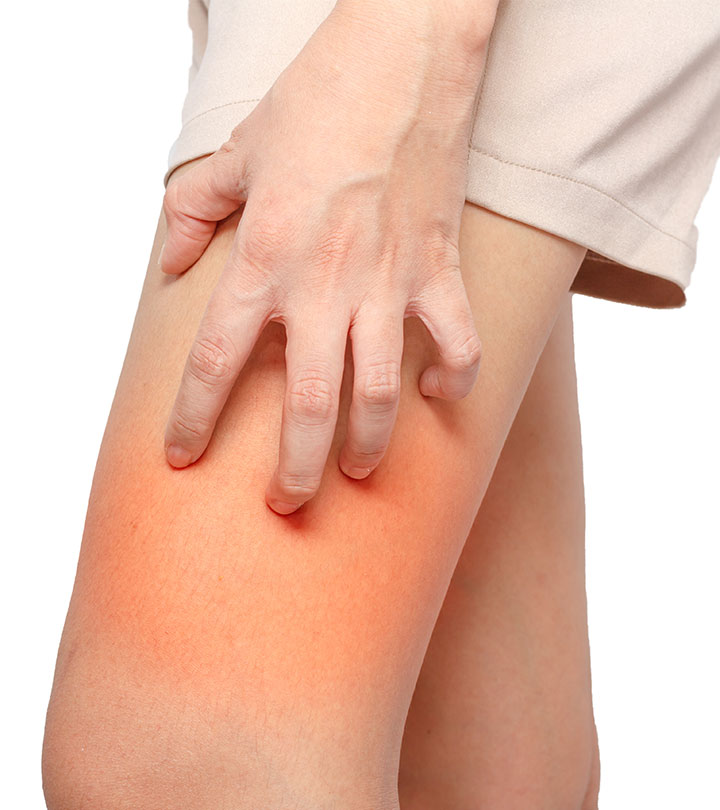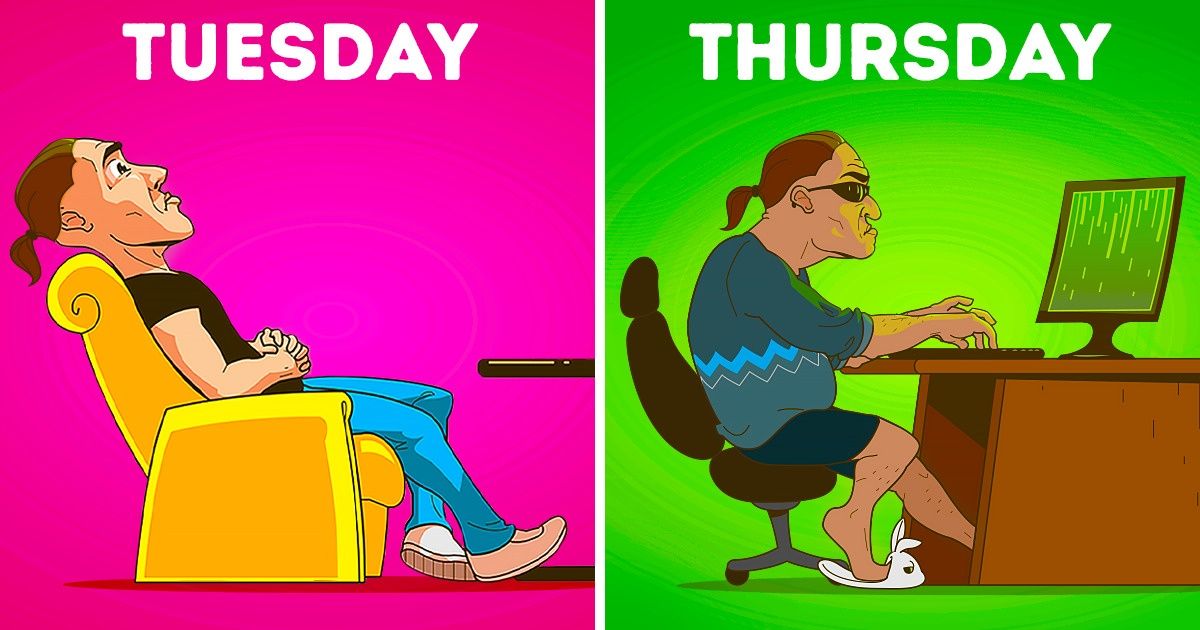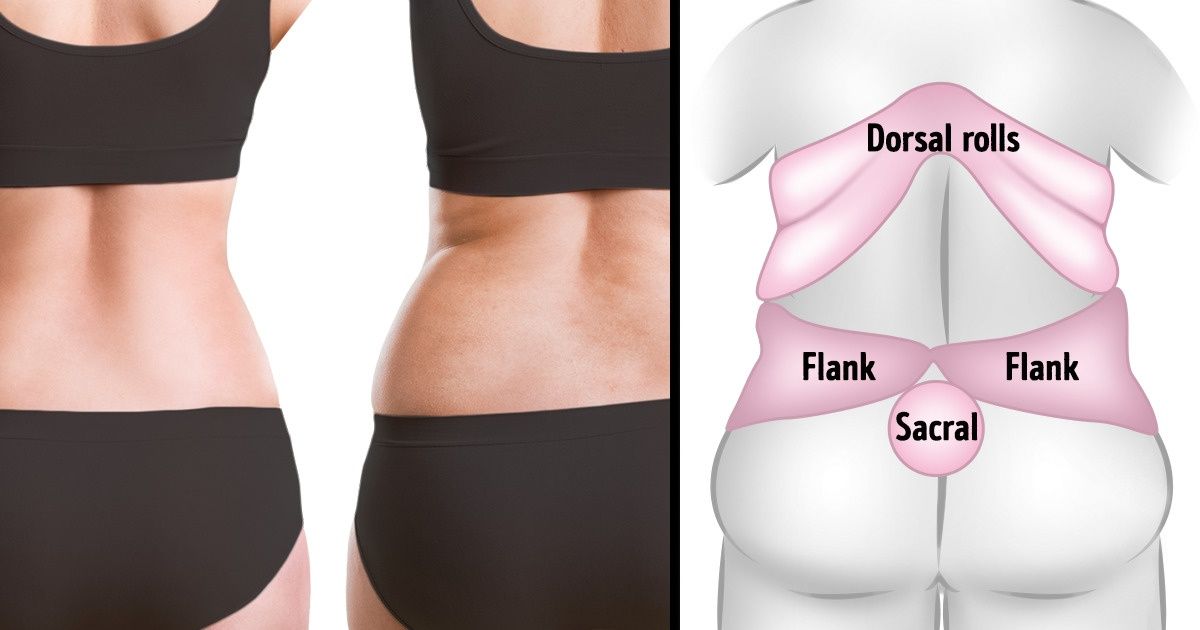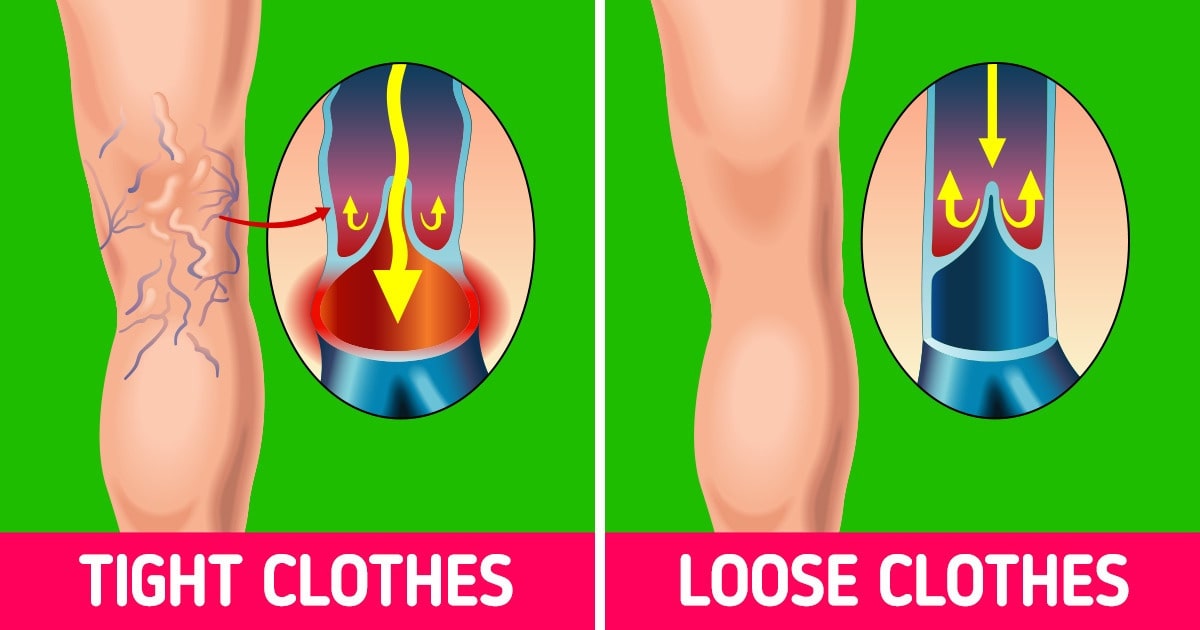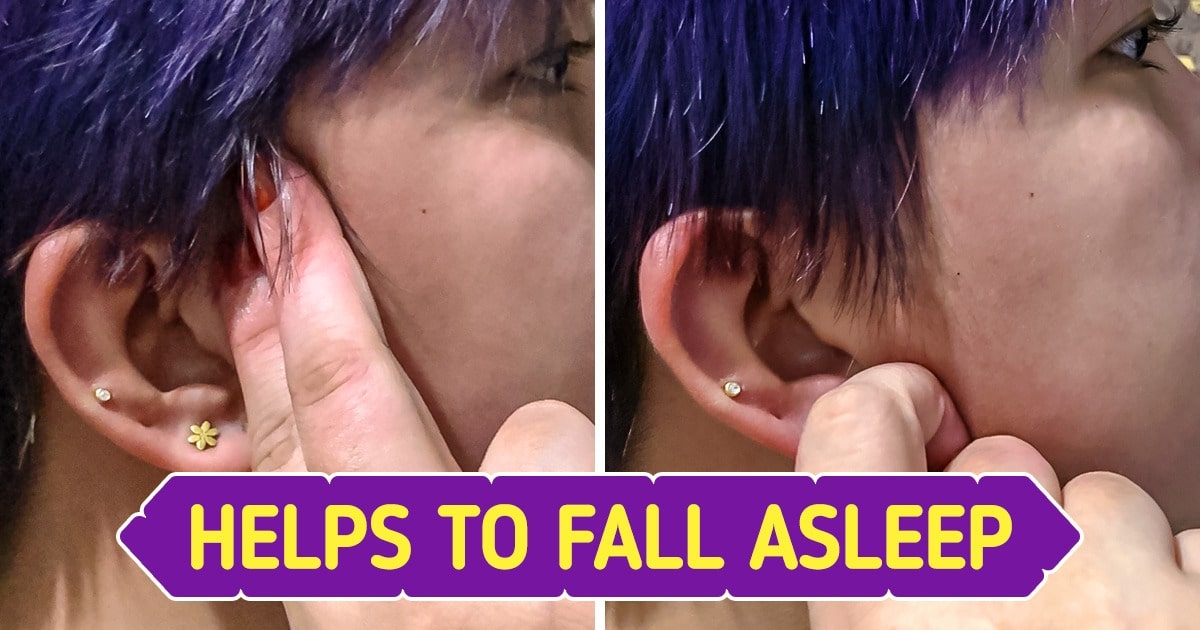A dazzling smile is often synonymous with health, confidence, and beauty. However, many individuals struggle with teeth staining, a common issue that can affect anyone—even those who practice good oral hygiene. While factors like genetics and age play a role, many everyday habits can lead to unwanted discoloration. In this comprehensive guide, we’ll explore six surprising ways you might be causing your teeth to stain. By understanding these causes, you can take proactive steps to preserve your natural whiteness and maintain a bright smile.
Our discussion is supported by reputable sources such as the American Dental Association and Mayo Clinic, ensuring that you receive credible, evidence-based information. Let’s dive into the habits that might be sabotaging your smile and discover actionable tips to reverse the damage.
Drinking Carbonated Water – Is Your Fizzy Habit Harming Your Teeth?
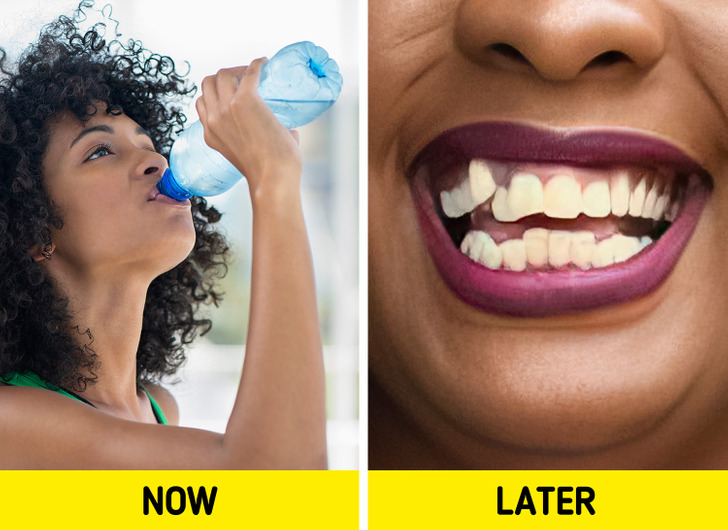
Many people choose carbonated water as a healthier alternative to sugary sodas. However, frequent consumption of fizzy drinks can have an unintended effect on your dental health.
How Carbonated Water Affects Your Teeth:
Acidic Nature: Carbonated water is mildly acidic due to the presence of carbonic acid, which is formed when carbon dioxide dissolves in water. This acid can gradually erode the enamel—the protective outer layer of your teeth.
Enamel Erosion: As the enamel wears down, your teeth become more susceptible to staining and decay. Even though carbonated water is better than sugary drinks, its acidic properties can still contribute to discoloration over time.
Frequency Matters: The impact is compounded when you sip carbonated water throughout the day, constantly exposing your teeth to acid.
For more information on how acidic beverages affect enamel, check out resources provided by the American Dental Association.
Tips to Minimize Damage:
Limit Frequency: Try to enjoy carbonated water in moderation and avoid sipping it continuously throughout the day.
Use a Straw: Drinking carbonated water through a straw can help reduce direct contact with your teeth.
Rinse with Water: After consuming fizzy drinks, rinse your mouth with plain water to neutralize the acid.
Pouring Soy Sauce Over Your Food – How Condiments Can Contribute to Discoloration
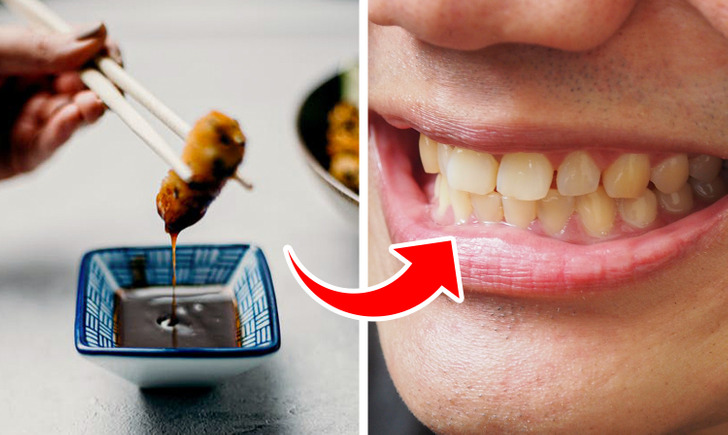
Soy sauce is a popular condiment in many cuisines, celebrated for its rich flavor and versatility. However, its dark color can lead to unexpected consequences for your dental aesthetics.
Impact of Soy Sauce on Teeth:
- Intense Pigmentation: Soy sauce is deeply pigmented, and frequent consumption can cause extrinsic stains on the surface of your teeth.
- Chemical Composition: The combination of salt and certain amino acids in soy sauce may interact with the enamel, making it more porous and prone to absorbing stains.
- Cultural Habits: In cuisines where soy sauce is a staple, individuals may not be aware that this everyday condiment can contribute to gradual discoloration.
Studies from dental research, such as those discussed by WebMD, suggest that dark-colored condiments and spices are common culprits in teeth staining.
Practical Advice:
Use Alternatives: Consider using lighter, less pigmented condiments when possible, or dilute soy sauce with water for a milder effect.
Moderation is Key: Enjoy soy sauce in moderation to limit its staining potential.
Rinse After Eating: Rinse your mouth or brush your teeth after meals that include heavily pigmented foods to help remove residual pigments.
Drinking Hot Beverages Often – The Hidden Side Effects of Your Morning Routine
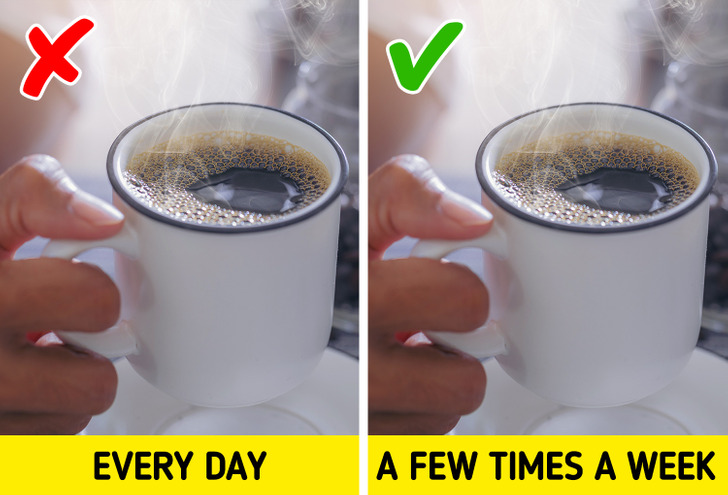
Hot beverages, such as coffee and tea, are a beloved part of many people’s daily routines. However, they are also notorious for causing teeth staining if consumed in excess.
How Hot Beverages Contribute to Staining:
High Tannin Content: Beverages like coffee and tea contain tannins, which are natural compounds that can cling to the enamel and leave behind dark stains over time.
Temperature Impact: The heat from these drinks can open up the pores of your enamel, making it easier for tannins and other pigments to adhere to your teeth.
Cumulative Effect: Regular, long-term consumption can lead to a noticeable change in the color of your teeth, even if you practice good oral hygiene.
According to Mayo Clinic, tannin-rich beverages are a primary cause of extrinsic stains on teeth, making it important to balance your intake.
Effective Strategies:
Routine Cleaning: Brush your teeth or rinse your mouth after enjoying a hot drink to remove any tannin residues.
Use a Straw: Similar to carbonated water, using a straw can minimize contact between the beverage and your teeth.
Temperature Control: Let your hot beverages cool slightly before drinking to reduce the thermal impact on your enamel.
Using the Wrong Mouthwash – When Your Oral Hygiene Routine Backfires
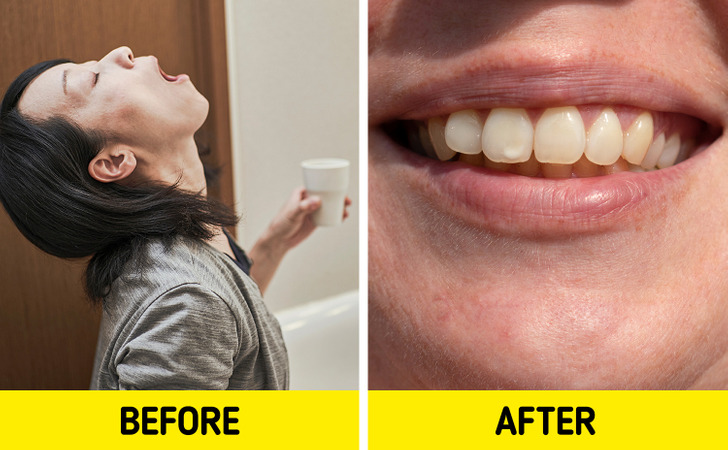
Mouthwash is a popular tool in the fight against bad breath and plaque, but not all mouthwashes are created equal. Some products may inadvertently contribute to teeth staining if they contain certain ingredients.
Why Some Mouthwashes May Stain Your Teeth:
- Chlorhexidine: While effective for treating gum disease, mouthwashes containing chlorhexidine can cause brownish stains on your teeth with prolonged use.
- Alcohol Content: High-alcohol mouthwashes can be too harsh on your enamel, leading to microscopic erosion that makes your teeth more susceptible to stains.
- Inadequate Formulas: Mouthwashes that lack proper anti-staining ingredients may fail to protect against the buildup of pigmented bacteria and plaque.
For additional insights, the American Dental Association advises consulting with your dentist to choose a mouthwash that aligns with your dental needs.
Suggestions for Better Oral Hygiene:
Alternate Products: Consider alternating between different types of oral care products to prevent the buildup of stains from any one ingredient.
Consult Your Dentist: Get recommendations for mouthwash products that are both effective and gentle on your enamel.
Use Alcohol-Free Formulas: Opt for mouthwashes that are free from alcohol and other harsh chemicals.
Brushing Too Hard – How Aggressive Brushing Can Damage Your Smile
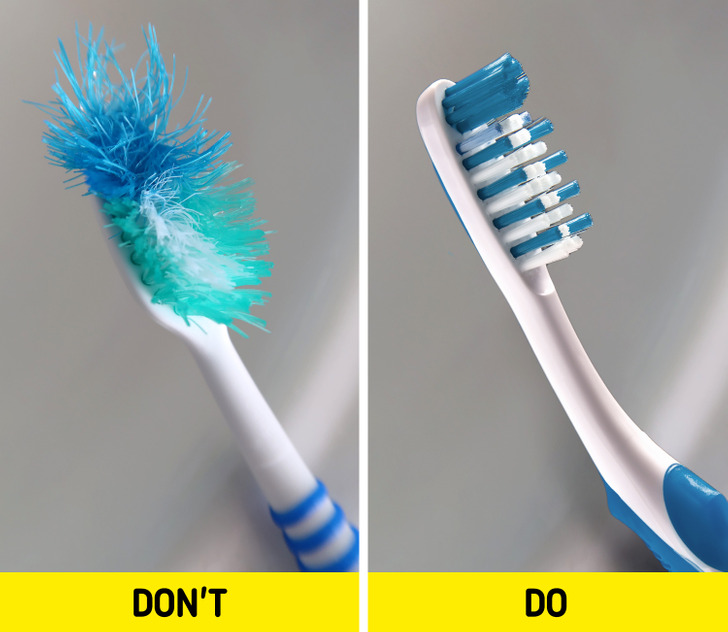
While it might seem counterintuitive, brushing your teeth too vigorously can actually harm your dental health and lead to increased staining.
The Dangers of Over-Brushing:
- Enamel Erosion: Brushing too hard can wear down the enamel, the protective outer layer of your teeth. A thinner enamel layer is less resistant to stains and can lead to tooth sensitivity.
- Gum Recession: Aggressive brushing can also cause your gums to recede, exposing the more stain-prone root surfaces of your teeth.
- Increased Porosity: Once the enamel is compromised, your teeth become more porous, which means they can more easily absorb pigments from foods and drinks.
Research highlighted by WebMD emphasizes that proper brushing technique is crucial for maintaining both oral health and a bright smile.
Tips for Gentle Brushing:
Electric Toothbrush Settings: If you use an electric toothbrush, choose a setting that is designed for sensitive teeth to avoid over-brushing.
Use a Soft-Bristled Toothbrush: Opt for a toothbrush with soft bristles that can effectively clean your teeth without damaging the enamel.
Proper Technique: Hold your toothbrush at a 45-degree angle to your gums and use gentle, circular motions rather than harsh scrubbing.
Not Drinking Enough Water – Hydration’s Critical Role in Oral Health
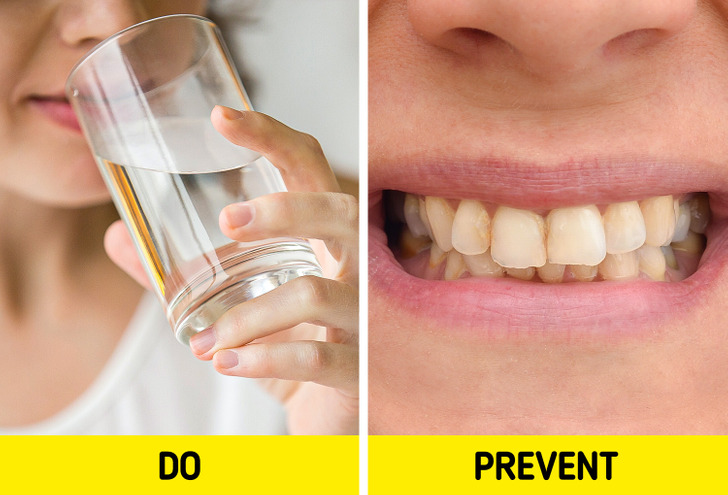
Water is essential for many aspects of your health, and its role in maintaining a bright smile is often underestimated. Failing to drink enough water can contribute to teeth staining and other dental issues.
How Dehydration Affects Your Teeth:
- Saliva Production: Adequate hydration is necessary for the production of saliva, which naturally cleanses your mouth and helps prevent the buildup of bacteria and plaque that can lead to stains.
- Acid Neutralization: Saliva also plays a key role in neutralizing acids produced by bacteria. Without enough water, your mouth becomes more acidic, increasing the risk of enamel erosion and subsequent staining.
- Overall Oral Hygiene: Regular water intake helps flush away food particles and bacteria that can otherwise settle on your teeth and cause discoloration.
For more detailed recommendations on the importance of hydration for oral health, the Mayo Clinic provides guidelines on proper water intake for various lifestyles.
Hydration Tips:
Infuse Your Water: If you find plain water unappealing, try infusing it with slices of lemon, cucumber, or mint for a refreshing twist without added sugars.
Set a Daily Goal: Aim to drink at least eight 8-ounce glasses of water a day, adjusting for your activity level and environment.
Keep Water Handy: Carry a reusable water bottle with you to ensure you have access to water throughout the day.
Integrating These Dental Care Habits into Your Daily Routine
Improving your dental health and preventing teeth staining involves more than just avoiding certain foods and drinks—it’s about creating a balanced oral care routine. Here are some actionable strategies to help integrate these insights into your daily life:
Morning Routine: Start your day by rinsing your mouth with water and using a gentle, fluoride toothpaste. Avoid immediately consuming hot beverages to give your enamel time to rehydrate.
Meal-Time Practices: If you know you’re going to consume staining foods like soy sauce or coffee, consider rinsing your mouth with water afterward. Using a straw for beverages can also help reduce direct contact with your teeth.
Evening Routine: Brush your teeth gently before bed, and if you use mouthwash, opt for an alcohol-free variety. Consider scheduling a regular dental check-up to monitor your oral health.
Hydration and Diet: Combine a balanced diet rich in fiber and vitamins with consistent hydration. This not only benefits your overall health but also enhances your oral hygiene.
Stress and Lifestyle: Maintain a calm, stress-free environment, as stress can indirectly contribute to dental issues by affecting your immune system and overall health.
The Broader Impact of a Healthy Smile on Your Overall Well-Being
Your smile is often the first impression you make, and its appearance plays a crucial role in your confidence and self-esteem. Beyond aesthetics, maintaining healthy, unstained teeth contributes to better oral health, improved digestion, and overall well-being. Neglecting proper dental care can lead to more serious conditions like gum disease, tooth decay, and even systemic health issues.
By adopting the strategies discussed, you’re not just preventing stains—you’re setting the foundation for a healthier, happier life
Conclusion – Take Charge of Your Dental Health Today
Every day, small habits add up to create significant changes in your oral health. Whether it’s avoiding acidic beverages, moderating your consumption of pigmented foods like soy sauce, using the right mouthwash, or simply drinking enough water, each step you take can have a lasting impact on the brightness of your smile.
By understanding the hidden causes of teeth staining and implementing these six effective strategies into your daily routine, you can protect your enamel, boost your confidence, and enjoy a healthier, more radiant smile. Start by evaluating your current habits and making incremental changes that lead to lasting results.
For further expert advice on dental care and teeth whitening, be sure to explore resources provided by the American Dental Association, Mayo Clinic, and WebMD. Their evidence-based insights can help guide you on the path to optimal oral health and a brilliant smile.
Take control of your dental routine today—your smile is worth it!
Preview photo credit Eric Audras / ONOKY / Getty Images, Unsplash.com


